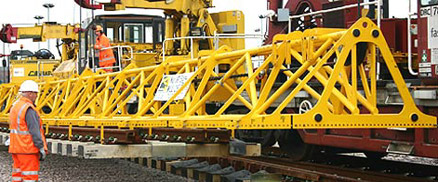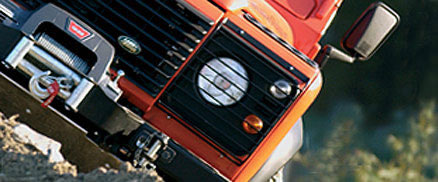April 21st, 2011
Railways have been an essential part of the infrastructure of most western countries for several decades. In the UK, railways are used constantly to transport people and goods and are essential to the economic well being of the country.
However, few people realise how much work goes into keeping our vast network of railway tracks safe and well maintained. There are several elements involved in track maintenance. Here’s a quick guide to track maintenance and safety:
Railway tracks need to be cleaned regularly but several of the methods used can cause damage. For example excessive cleaning of tracks can cause scratching and can attract more dust to settle.
Metals that are used for tracks need to go through a series of processes before they are ready such as heating and cooling processes. It is only once they have been carefully treated that they are ready to be used as train tracks.
The ballast of the track (the space between the rails and the ties) should be smooth to ensure that the rails are parallel. If the ballast is not smooth it can cause uneven or disrupted rail tracks.
General wear and tear can be a problem and needs to be carefully monitored.
Rails should be securely attached. If they are too loose they can cause the rail wheel to ‘bounce back’ which can result in an extremely bumpy journey or even derailment.
There are several ways to carry cleaning and safety equipment along train tracks, for example rail skates.
Rail skates can be used individually or in pairs and clip on attachments can be fitted to increase the carrying capacity.
Keeping rail tracks clean and safe requires immense precision and skill. There are several types of safety equipment that need to be involved in the process, and various machinery which can help with the job.
Railway track maintenance is extremely important for both passengers and goods and performing the correct safety assessments can prevent catastrophes from happening. Professional railroad contractors and professional railroad safety equipment providers help to ensure that the UK’s vast network of tracks is kept safe.
Posted in Arbil Rail |
April 1st, 2011
K 1250 Rail Cutter
The petrol powered K1250 Rail is an entire rail cutter all the way from the engine to the cutting arm and fixture. This cutting saw is light, robust and flexible and does not compromise on quality, durability or reliability.
K 1260 Rail Cutter
With its 119cc (5.8kW) motor, the K 1260 is the world’s strongest rail-cutter. It also weighs in at 5kg less than its competitors in the same power class. The K 1260 Rail is capable of using both 14in and 16in blades. Fitted with double fixture attachments, this enables the operator to turn the machine and cut from the other direction. This means you can cut rails faster than ever, while letting the cutter do the work. The rail cutter is, in spite of the amazing power developed, surprisingly easy to control, thanks to its balanced construction and ergonomic design.
Specifications of the K 1260 Rail:
- Air-cooled two-cycle engine
- 119cc displacement
- 5.8kW power
- • Weight (without fuel or blade, inc. RA 10): 20.7kg (14in), 21.4kg (16in)
- Blade diameter: 350mm (14in), 400mm (16in)
- Cutting depth: 125mm (5in), 145mm (6in)
Having a stable fixture provides precise cuts. The arms of the patented RA 10 and RA 10 S fixture are short, and its joints have needle and ball bearings for the best stability possible. This not only makes the machine compact and easy to control, but also results in precise cuts on all levels. The rail saw attachment is fitted to the rail quickly and firmly. It provides right-angle cuts in all positions, with a folding guide to mark the exact location. The optional RA10S with a clamping width of up to 135mm is designed for the wider tram railway rail.
Posted in Arbil Rail |
February 23rd, 2011
Camlok lifting clamps are the most suited clamps to use for all UK rail track currently in use. The clamps are suitable for lifting beams, rail tracks and other sections of track. The range of Camlok clamps have been designed to lift in a secure and safe way. Currently Camlok offer a wide range of clamps suitable for the rail industry.
CR – Single Rail Clamp
This clamp is designed with a narrow profile which enables safe attachment to individual rail that is stacked side by side with other rails. Once the clamp is positioned it is locked onto the rail-head by using a lever operated spring mechanism. If the rail track is of a longer length then these clamps should be suspended from a lifting beam to operate at full potential.
RP – Rail Pulling Clamp
A rail pulling clamp fits almost most rail sections. This clamp is designed to be used when positioning rail sections. It has a screw shaft mechanism which is used to attach the clamp to the web of the rail. At the end of the screw shaft are hardened steel circular teeth and the opposing pad also has hardened circular steel teeth for a strong grip.
The shaft is supported on a bearing that allows a high degree of angular movement. When a lateral load is applied to the clamp, the pad rotates in a cam action and securely grips the rail web securely and safely.
Posted in Arbil Rail |
January 21st, 2011
When working at height, particularly with overhead lines, safety must be paramount. The correct health and safety equipment needs to be used and this includes safety harnesses and lanyards. However, like with most things lanyards will suffer wear and tear and become deemed no longer safe to use.
The following defects and damage have the potential to result in the degradation and/or weakening of the lanyard:
- cuts of 1 mm or more at the edges of webbing lanyards (eg where the lanyard may have been choke-hitched around steelwork);
- surface abrasion across the face of the webbing and at the webbing loops, particularly if localised
- abrasion at the edges, particularly if localised
- damage to stitching (eg cuts or abrasion)
- a knot in the lanyard, other than those intended by the manufacturer;
- chemical attack which can result in local weakening and softening – often indicated by flaking of the surface. There may also be a change to the colour of the fibres
- heat or friction damage indicated by fibres with a glazed appearance which may feel harder than surrounding fibres;
- UV-degradation which is difficult to identify, particularly visually, but there may be some loss of colour (if dyed) and a powdery surface;
- partially deployed energy absorber (eg short pull-out of tear webbing);
- contamination (eg with dirt, grit, sand etc) which may result in internal or external abrasion;
- damaged or deformed fittings (eg karabiners, screwlink connectors, scaffold hooks);
- damage to the sheath and core of a kernmantel rope (eg rucking of the core detected during tactile inspection);
- internal damage to a cable-laid rope.
Posted in Arbil Rail |
December 31st, 2010
The safe use of beam clamps will largely be governed by the requirements for the lifting appliance with which it is to be used but should take the following matters into account:
- Do not use defective beam clamps, lifting appliances or accessories.
- Ensure the structure from which the clamp is to be suspended is undamaged and is adequate for the full load that will be imposed. If any doubt exists consult a Competent Person to confirm suitability of the clamp.
- Ensure the clamp is suitable for the application, correct size and profile for the beam and seats correctly and safely. It must not cause localised overloading.
- Ensure the lifting appliance is compatible with the clamp and that hooks or other attachments fit freely into the eye, shackle etc of the clamp.
- The clamp must be positioned directly over the centre of gravity of the load and the load must not be allowed to swing or impose an oblique loading.
- If two clamps are to be used in tandem the use of ancillary equipment may also be necessary, eg spreader beam. Care must be taken to ensure no one clamp takes more than its SWL.
Posted in Arbil Rail |


